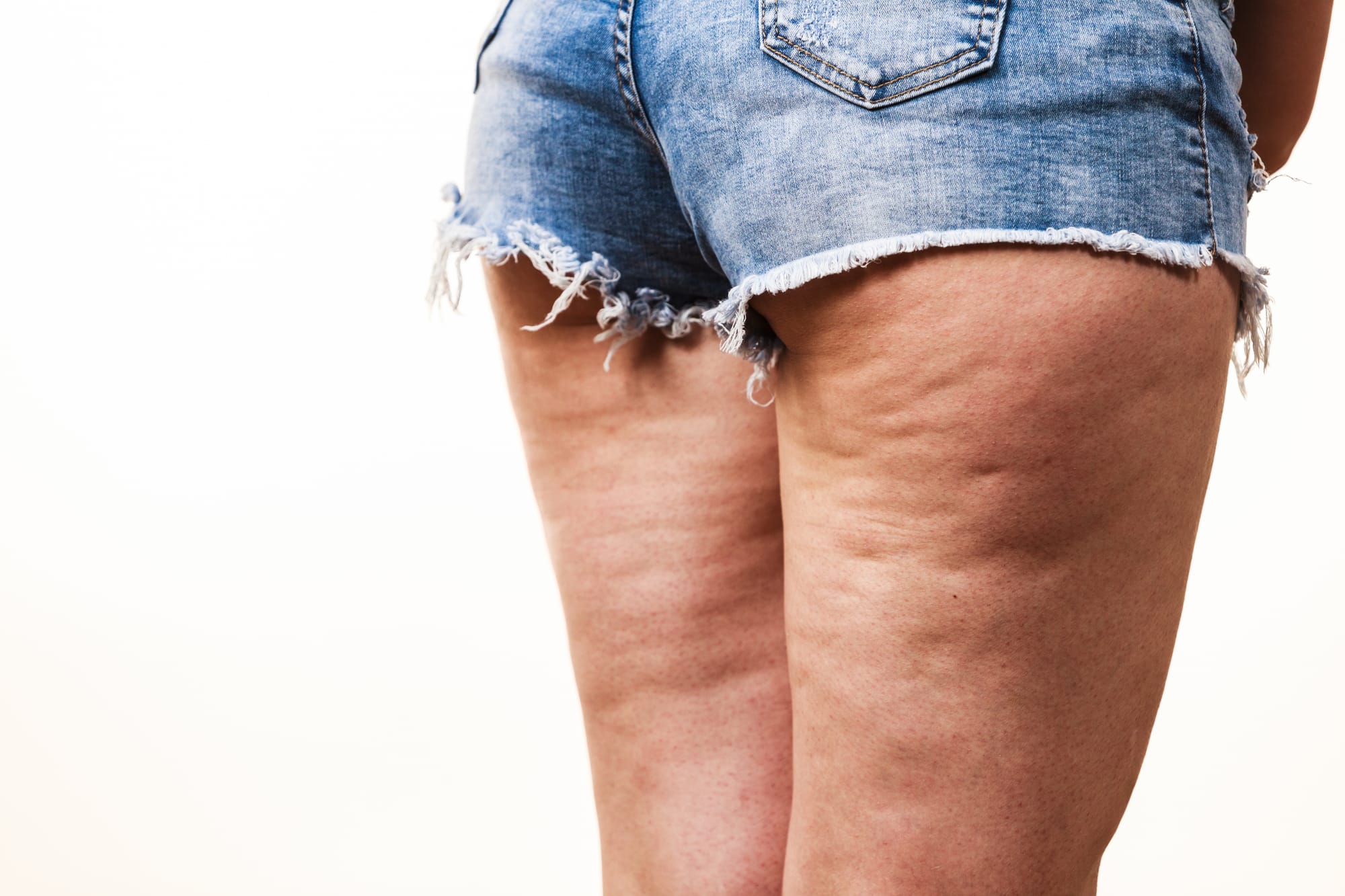Cellulite... Why so much fuss?

I've made a decision that might seem small but feels revolutionary: I'm wearing shorts to the gym. Volleyball-style shorts, at least a few days a week. This choice represents something bigger than athletic wear—it's about rejecting shame over something that affects the vast majority of women.
The Personal Backstory
For years, I've been hiding my thighs because of the light cellulite that appeared in my mid-twenties. Like many women, my relationship with my body shifted dramatically during the transition from teenager to adult. I gained significant weight between ages 17 and 18 (thanks, puberty!), and when I started college, I committed to getting in shape.As I lost weight and my body slimmed down, I felt proud of my progress. But then, around age 24, cellulite simply showed up. I remember feeling completely dismayed that my thighs weren't tight and taut like my athletic friends who seemed to be putting in equal effort. What was I doing wrong? I wondered.Turns out, I was doing the same thing most of us do wrong in first-world countries: eating a poor diet and not moving enough throughout the day.
The Science Behind the Dimples
Recently, I came across research that clarified exactly what cellulite is and why it's so prevalent in industrialized nations. According to Dr. Lionel Bissoon, cellulite affects 90 percent of women and 10 percent of men, mostly in industrial nations. The condition becomes visible as estrogen levels naturally decline with age.Here's what happens: As women age, estrogen starts decreasing. From 25 to 35 is when you start seeing the appearance of cellulite. Estrogen has an impact on the blood vessels. When estrogen starts to decrease, you lose receptors in blood vessels and thighs, so you have decreased circulation. With decreased circulation you get less oxygen and nutrition to that area, and with that we see a decrease in collagen production. At this time, fat cells start becoming larger and begin protruding through the collagen, becoming the bumpy fat known as cellulite.But here's what many people don't know: Women tend to get cellulite around knees, saddlebags and buttocks, because they have three layers of fat in these areas instead of just one. Women also have three levels of fat in the stomach and in the triceps areas.
The Industrial Nation Connection
The statistic that stopped me in my tracks was that 90 percent of women in industrial nations develop cellulite. Why such a stark difference from women in developing countries?Dr. Bissoon explains: "I've spent a lot of time traveling in developing countries and photographing local women. When I photograph these women who don't have much, or any, cellulite, you see the kind of work they're doing and the kind of food they're eating. They're eating all organic foods, they're constantly moving from the time they get up".The contrast is striking. These women are washing clothes in the river. Getting water in an industrialized country means getting up and going to the fridge or faucet. For women in developing countries, they're walking to the river and coming back carrying a heavy container.Research supports this observation. Studies show cellulite is considerably less common in women of East Asian descent than in white women, and factors like high-stress lifestyle, inactivity, and excessive carbohydrate consumption are all associated with cellulite development.
The Underwear Plot Twist
One of the most surprising discoveries was about tight clothing. It turns out that the shapewear we wear to hide cellulite might actually make it worse. Tight underwear and pantyhose can worsen cellulite by cutting off circulation. The recommendation? Looser-fitting undergarments that don't restrict blood flow.This revelation made me think about my beloved yoga pants—essentially modern-day pantyhose. While I won't be abandoning them entirely (comfort is still important), I'm now more mindful about wearing looser sizes and taking breaks from tight-fitting clothes.
The Bottom Line on Treatment
The cellulite treatment industry is booming, with the global market valued at USD 699 million in 2022 and projected to reach USD 1,540 million by 2031. Treatment options range from topical creams to expensive medical procedures, but none offer guaranteed permanent results.After researching the options and their costs, I kept coming back to the same conclusion: It's really a whole biochemistry. It's hormone balance—you need to eat healthy, you need activity.
My Reality Check
Here's what shifted my perspective entirely: I realized I don't actually care about having cellulite. It's valuable to have information and options, but the most affordable and effective approach is simply continuing to focus my lifestyle on overall wellbeing.Ninety percent of women in my culture have cellulite. I'm part of the majority, not an anomaly. More importantly, I can say with 100% certainty that I've reached a point where I love my body and it loves me back. There's no point in fixating on something that doesn't hurt me, limit my movement, or affect my health.
The Shorts Decision
So I'm choosing shorts. Not as a bold political statement, but as a quiet act of self-acceptance. I'm choosing to see my cellulite as normal rather than something to hide. I'm choosing movement and comfort over shame and concealment.This isn't about telling anyone else what to do with their body—cellulite treatment is a personal choice, and there's no wrong decision. But for me, wearing shorts represents alignment with my values: prioritizing health over appearance standards, choosing evidence-based wellness over expensive quick fixes, and embracing my body as it is while continuing to care for it well.The dimples on my thighs don't define my worth, my health, or my strength. They're simply a normal part of being a woman in an industrialized nation who sits at a desk, eats processed food sometimes, and doesn't wash clothes in a river.And that's perfectly fine with me.
This article reflects the author's personal experience and research. Always consult healthcare providers for medical advice regarding any concerns about your body or health.
Original Version Published 09/23/2020, Revised and Reposted 06/06/2025
